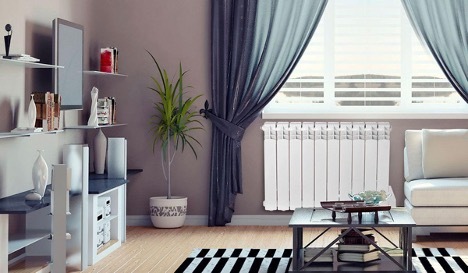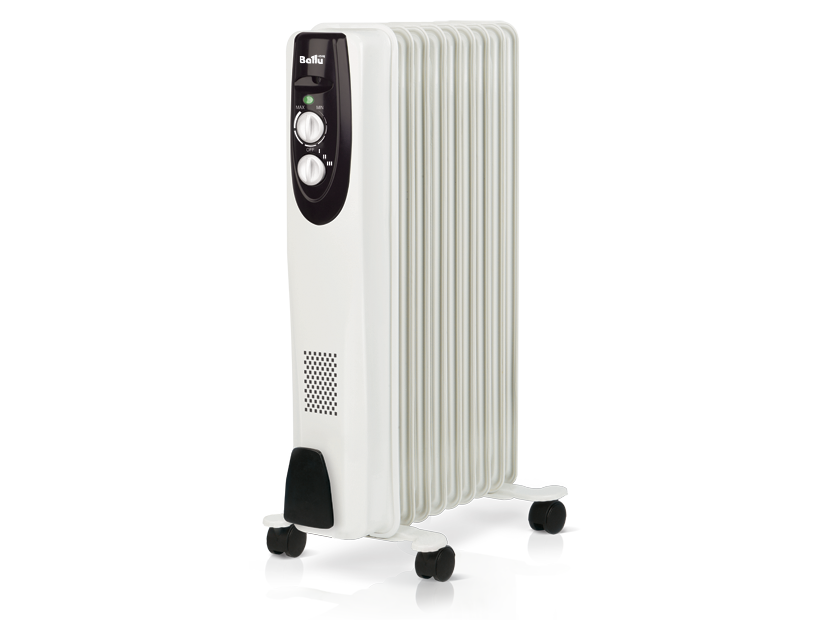When planning a heating system, it is important to accurately calculate the number of sections of a bimetallic radiator. This guarantees efficient and economical heat distribution throughout the room. Bimetallic radiators, combining the advantages of steel and aluminum, provide high heat transfer and durability. To determine the required number of sections, several factors should be taken into account. This is the area of the room, the height of the ceilings, and the level of thermal insulation.

The content of the article
- Where to begin
-
Bimetallic radiators: calculation of sections per room
- Calculation example
- Dimensions and weight of bimetallic radiators
- Calculation of bimetallic radiators per area
- Heating area of one section of a bimetallic radiator
- How to calculate the number of sections of a bimetallic radiator
- Common miscalculations
- Conclusion
Where to begin
Calculation of sections of bimetallic heating radiators by area includes several key steps:
- First you need to accurately measure the area of the room.
- Based on the area, the total heat demand is calculated based on standard standards per square meter.
- The thermal power of one section of the selected radiator model is taken into account.
Bimetallic radiators: calculation of sections per room
Bimetallic radiators are a popular choice for heating systems due to their efficiency and durability. When choosing the number of sections for a particular room, it is important to consider a number of factors to ensure optimal heating without unnecessary energy costs.
Main parameters for calculation:
- The first step is to measure the area of the room (length x width). This provides the basis for further calculations.
- Standard calculations are usually based on ceiling heights of up to 2.7 meters. If the ceilings are higher, the number of sections will need to be increased to ensure adequate heating.
- Determine the thermal power of one radiator section (usually stated in watts per section) according to the manufacturer's specifications.
- In colder climates or poorly insulated homes, more sections may be required.
Calculation example
The thermal power standard depends on the climatic conditions and the quality of the building's thermal insulation, and can vary from 60 to 100 W/m².
Taking into account the features of the room:
- if the room has large windows or several external walls, it may be necessary to increase the number of sections;
- It is necessary to take into account the installation location of radiators - under windows, in corners or on internal walls, as this affects the heat distribution.

Dimensions and weight of bimetallic radiators
Before purchasing, you should also consider the size and weight of bimetallic radiators. Dimensions vary depending on model and manufacturer, and can affect the overall heat output and appearance of the radiator in the interior. The standard weight of a 500 mm radiator section is approximately 3-4 kg, and a radiator of 10 sections is about 30-40 kg.
Calculation of bimetallic radiators per area
An important aspect is the calculation of bimetallic radiators per area. This calculation helps determine how much heat each radiator section will generate to heat a given volume of space. Calculations are based on the heating power of one section and the total heat requirements for a particular room.
Heating area of one section of a bimetallic radiator
One of the key parameters when choosing a radiator is the heating area of one section of a bimetallic radiator. It indicates how much area one radiator section can effectively heat, and plays an important role in the overall calculation of the required number of sections for a room. This information is often provided by the manufacturer and may vary depending on the radiator model.
How to calculate the number of sections of a bimetallic radiator
So, how to calculate the number of sections of a bimetallic radiator? The process includes the following steps:
- determination of the thermal needs of the room;
- choosing the appropriate type and model of radiator;
- calculation of the number of sections based on the area of the room and the thermal power of one section.
These steps will help ensure your home or office is heated efficiently and economically.
Common miscalculations
Correct calculation of the number and power of bimetallic heating radiators is a key point in ensuring efficient and economical heating of the room. Errors in calculations can lead to insufficient heating or unnecessary costs. Let's look at the most common mistakes that should be avoided.
Incorrect assessment of the heating area. The mistake here is not taking into account the height of the ceilings. Rooms with high ceilings require more heat, which means more radiator sections are needed.
And underestimation of the quality of the building’s thermal insulation can lead to incorrect calculations of the required radiator power.
Errors in the selection of radiators are one of the most common mistakes when radiators with insufficient thermal power are selected to save money, which ultimately does not provide the required level of heating.
And the wrong choice of size and design of radiators can not only spoil the appearance of the interior, but also reduce heating efficiency.
Incorrect calculation of the number of sections. Each room is unique, and calculations must take into account individual conditions such as the number and size of windows, the presence of external walls and the overall layout of the room. Regions with colder climates will require more heat, which should be reflected in the calculations.
Conclusion
By avoiding these common calculation errors, you can significantly improve the efficiency of your heating system. It is important to carry out careful and accurate calculations, taking into account all key factors, to ensure comfortable living and optimal use of energy resources.


